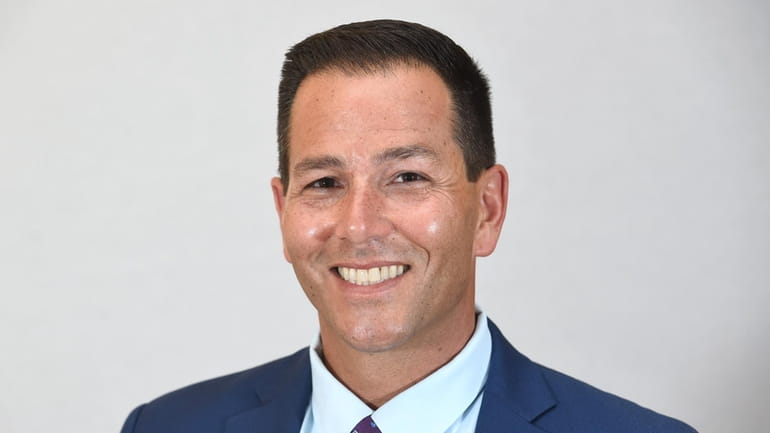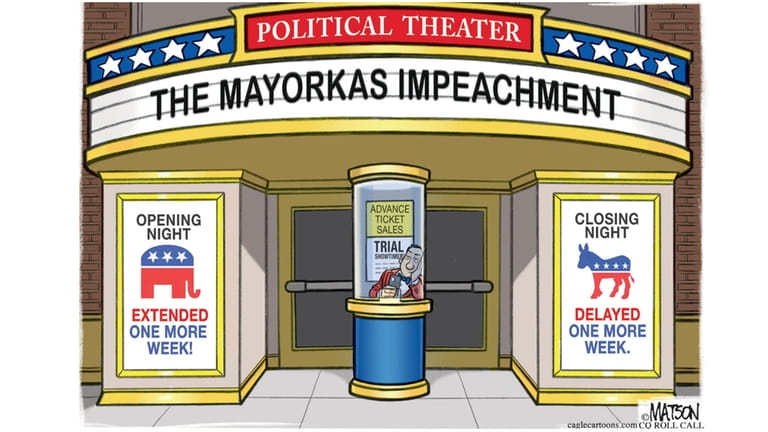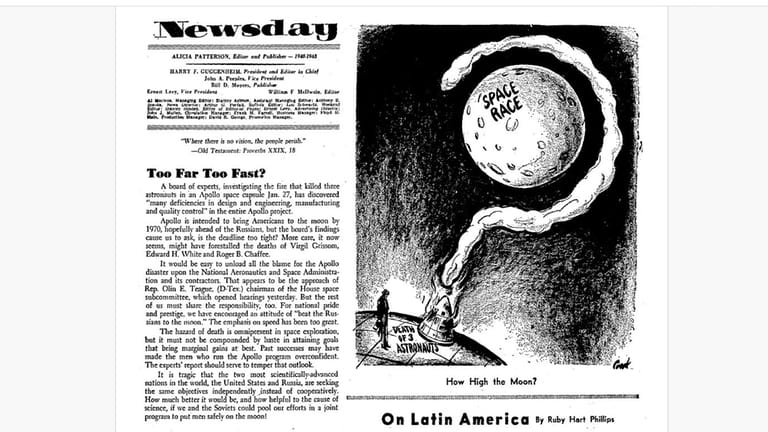LI Dems screw up AD9 ballot line

Republican Assemb. Michael Durso of Massapequa Park. Credit: James Escher
Daily Point
Dems’ AD9 blunder hidden in plain sight
New York is one of only a few states that allows cross-endorsement, or “fusion” voting, the practice by which political parties nominate nonmembers for their ballot lines.
Most of the time, it emerges when a major party candidate seeks extra votes by running on an additional minor party ticket. The authorization by the parties has long been called a Wilson Pakula.
But a rare cross-endorsement twist, caused by an apparent oversight, has emerged this month in the 9th Assembly District election to be decided in November.
The 9th AD, represented by Republican incumbent Michael Durso of Massapequa Park, sits in both Suffolk and Nassau counties.
Party rules indicate that the designated Democratic opponent, Steven J. Dellavecchia — a registered Conservative — should have been voted onto the ballot by both counties’ Democratic committees which gave him their line.
Instead the specially required authorization to place Dellavecchia, from West Babylon, on the ballot was submitted only by the Democrats’ Suffolk committee — without the Nassau organization’s required joint permission, party sources acknowledged to The Point. “Yeah, we screwed it up,” said one.
The turgid language in the official rules says: “In each Assembly District which comprises only parts of two or more counties and no whole county or counties, each state committee member elected from such a part of a country shall cast a number of votes equal to one half of the last Democratic gubernatorial vote cast in such part of a county.”
The bottom line: Having parts of two counties in a district means approval for the nomination must be voted by both counties’ committee members and submitted to the state Board of Elections.
Despite their error, Democrats have not been scrambling to undo and correct it — and Republicans aren’t howling about Dellavecchia’s irregular route to the ballot. So far the candidacy hasn’t been disqualified.
Why no inter-partisan static? Evidently, Durso is considered such a sure bet for reelection to this deep-red Republican seat that it does not seem worth the time to slug this one out, insiders on both sides say.
In the 9th AD two years ago, incumbent Durso beat the same challenger, Dellavecchia, by a wide margin, garnering 70% of the vote. So local leaders of the major parties don’t seem fired up to fuss over this glitch.
And the foul-up is likely no more interesting to the state parties. Leaders of both know that next January, the Assembly Democrats, with or without the 9th AD, are expected to keep their commanding majority in the Albany chamber, which now stands at a lopsided 102 to 48.
Meanwhile, Durso is also cross-endorsed by the same Conservative Party to which Dellavecchia belongs.
This is just an odd slice of life from the obscure world of the Wilson Pakulas.
— Dan Janison dan.janison@newsday.com
Pencil Point
Political theater

Credit: CQ Roll Call/R.J. Matson
For more cartoons, visit www.newsday.com/nationalcartoons
Reference Point
When LI reached for the moon, and got there

The Newsday editorial and cartoon from April 11, 1967.
Flight — in the skies and in space — has been an essential part of Long Island’s story.
It started in aviation’s earliest days with famed airfields like Mitchel and Roosevelt fields, the latter of which was the starting point of Charles Lindbergh’s historic solo flight across the Atlantic Ocean to Paris in 1927.
The legacy continued with Long Island companies manufacturing iconic planes during World War II. On April 11, 1945, Newsday’s editorial board commented on a visit to Grumman’s Bethpage plant by Deputy Chief of Naval Air Operations Admiral Aubrey W. Fitch, who commended Grumman for breaking two world records for production of planes — in this case, the company’s famed Hellcat. The board wrote that Grumman’s citation was “in keeping with the record that Long Island has hung up in all branches of the war effort.”
“Republic’s redoubtable Thunderbolt has made air history wherever it has hit the enemy. Columbia’s Duck has been helping patrol work. Dzus Fastener Co. in Babylon has been pitching. Ranger has turned out engines. Sperry has directed ships, bombs, guns and planes with precision instruments. Columbian has made propellers. Liberty has helped make Grumman’s production possible. Add it all together and you have a couple of counties whose residents have been in there throwing fast balls that have done one helluva lot to help knock the Axis off its axis,” the board wrote, referring to the nations at war with the U.S.
Later, Grumman would become renowned for making the lunar landing module used by NASA to put men on the moon, a point of particular Long Island pride.
But the Apollo program suffered setbacks along the way, most notably in 1967 when a fire during a launch rehearsal test for Apollo 1 killed all three crew members — Gus Grissom, Ed White and Roger B. Chafee.
On April 11, 1967, Newsday’s board lamented their deaths in a piece called “Too Far Too Fast?” The board reacted to a report that found “many deficiencies in design and engineering, manufacturing and quality control” in the Apollo program.
“But the rest of us must share the responsibility, too,” the board wrote. “For national pride and prestige, we have encouraged an attitude of ‘beat the Russians to the moon.’ ”
Too much emphasis had been placed on speed, according to the board.
“The hazard of death is omnipresent in space exploration but it must not be compounded by haste in attaining goals that bring marginal gains at best,” the board wrote.
The editorial was complemented by a cartoon called “How High the Moon?” which depicted a column of smoke from a burning space capsule on Earth that formed a question mark around the moon. The orb bore the label “SPACE RACE.”
On July 20, 1969, Grumman’s module brought Apollo 11 astronauts Neil Armstrong and Buzz Aldrin to the moon and back — the first of six successful moon landings between 1969 and 1972.
Those six lunar landers remain the only crewed vehicles to land anywhere beyond Earth — vehicles made on Long Island.
— Michael Dobie michael.dobie@newsday.com, Amanda Fiscina-Wells amanda.fiscina-wells@newsday.com
Subscribe to The Point here and browse past editions of The Point here.
